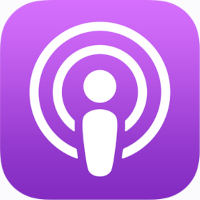American Government 3e
OpenStax
AMERICAN GOVERNMENT 3E
Our American Government 3e audiobook is your go-to resource for understanding the ins and outs of the U.S. government. Whether you’re a student, educator, or just curious about American politics, this audiobook is the perfect tool to enhance your learning. Listen along as we explore the fascinating world of American government.

LISTEN NOW
Audio recordings of all 17 chapters to help you study and succeed! Choose your preferred platform or listen directly on our website below!
Trailer Episode

Welcome! The narrators introduce the project and themselves. We have created an audiobook production of American Government 3e, an OpenStax textbook. This textbook provides an introduction to US government and civics, and is used widely as in college-level Political Science courses.
Also available on Spotify, YouTube, and Apple Podcasts.Chapter 1: American Government and Civic Engagement

Chapter 2: The Constitution and Its Origins

Chapter 3: American Federalism

Chapter 4: Civil Liberties

Chapter 5: Civil Rights

Chapter 6: The Politics of Public Opinion

Chapter 7: Voting and Elections

Chapter 8: The Media

Chapter 9: Political Parties

Chapter 10: Interest Groups and Lobbying

Chapter 11: Congress

Chapter 12: The Presidency

Chapter 13: The Courts

Chapter 14: State and Local Government

Chapter 15: The Bureaucracy

Chapter 16: Domestic Policy

Chapter 17: Foreign Policy


Creative Commons License
This is a professionally narrated audiobook production of American Government 3e, an OpenStax textbook. This textbook provides an introduction to US government and civics, and is used widely in college-level Political Science courses. We believe that this project will be helpful to everyone, and especially to those who are auditory learners, students with disabilities, and students who speak English as a second language.
The audio recordings are offered under a Creative Commons license (CC-BY-SA 4.0). You are free to use, revise, remix, and share these recordings as long as you give proper attribution and share any derivative projects under the same license.
The producers and narrators of this project are Brian Barrick and Sarah Arya. The intro and outro music is “Take Me Higher” by Jahzzar (CC-BY-SA).
The full textbook is available for free at https://openstax.org. Some editorial changes were made to the text to ensure a better listening experience. Funding for this project was provided by CC-ECHO (California Consortium for Equitable Change in Hispanic Serving Institutions Open Educational Resources). The contents of this audiobook were developed under an Open Textbooks Pilot grant from the Fund for the Improvement of Postsecondary Education (FIPSE), U.S. Department of Education. However, those contents do not necessarily represent the policy of the Department of Education, and you should not assume
endorsement by the Federal Government.
is an Instructor of Political Science at Los Angeles Harbor College. He teaches classes on American Government, Political Theory, and Global Politics.
is an undergraduate student of Political Science at California State University, Long Beach. Her career goal is to attend law school and become a practicing attorney.
is part of Rice University. They publish high-quality, peer-reviewed, openly licensed college textbooks that are absolutely free online and low cost in print.






















